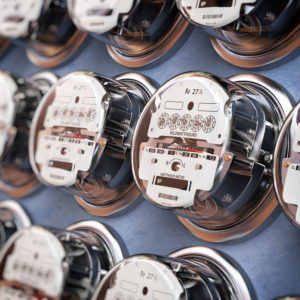New Hampshire consumers depressed about high gasoline prices will soon get an unwelcome slap in the face. Electricity prices will increase as much as 50 percent or more in the next few months because high natural gas prices have fueled an increase in regional electricity costs.
According to New England’s grid operator, in 2021 natural gas and electricity prices reached their highest level since 2014. Furthermore, the winter of 2021-2022 saw average real-time electricity prices hit $105.48 per megawatt hour, compared to $51.66 in the winter of 2020-2021.
Much of the region’s power gets generated by gas-fired plants. As gas prices rise, the cost of electricity follows. The upward trend in natural gas prices has worsened in 2022 with the world demanding more natural gas from the U.S. due to the Ukraine-Russia conflict. As a result, electricity prices in New England were high this winter and have remained so going into the spring/summer season.
Electricity from Eversource and Liberty will top out at 22 cents per kilowatt hour this summer and fall and the N.H. Electric Co-op’s rate will jump to 17 cents. That’s twice the cost from the past six months. That means an increase in an average utility bill of over $70 a month.
Any ratepayer can switch from their current utility to a retail competitive supplier. Such a switch can save most of that average $70 increase, but only for a specified contract period. Then, even those rates will eventually increase.
But other factors also contribute to the rising cost of electricity. The most recent auction for carbon credits from the regional greenhouse gas initiative (RGGI) came in at $13.90, an increase from $7.97 just under a year ago. Even though high auction prices mean N.H. will get back more money to rebate to ratepayers, those auctions lock in further increases in the cost of electricity. Republican legislators in Concord averted an effort by Democrats in this past session to take RGGI rebates away from electricity ratepayers. Those rebates help offset any rise in the cost of electricity.
Adding to these inflationary pressures, the federal energy regulatory commission (FERC) just approved a plan to phase out a reliability market rule, called the minimum offer price rule or MOPR, that could lead to the premature closing of nuclear and gas-fired generation plants across the region. N.H. abstained from a vote on eliminating the MOPR, which was effectively a vote against it. But the region nevertheless voted in favor of allowing more renewable energy projects to receive reliability payments despite their dependence on variable and unreliable weather for power production, which will increase reliability costs for backup generators.
The cause of rising energy costs in New England comes from both inside and outside the Granite State. Here at home, efforts over the years to block hydroelectric transmission corridors and natural gas pipelines put us on a path to fuel and power shortages. Much blame also rests with the current federal administration’s policies that either prohibit pipelines, like Keystone XL, or make gas pipelines harder and more expensive to build. Worryingly, some observers predict that non-NH state energy policies that favor green energy over more reliable sources may eventually cause costs to go up for Granite State ratepayers, too.
Some progressives will claim that the high cost of electricity results from a paucity of renewable energy. But government-mandated programs like the renewable portfolio standard that promote renewables add costs to every electric bill. The fuel for renewables might be cheap, but the infrastructure needed to capture that energy is both expensive and, critically, weather dependent.
Meanwhile, NH lawmakers this year put guardrails in place on energy policies like energy efficiency and municipal net metering that can drive up costs precipitously if not carefully managed. The benefits of such programs need to be meticulously weighed against their costs to find the right balance.
Conservative policymakers will continue to prioritize policies that make electricity both affordable and sustainable. But in the meantime, ratepayers need to be prepared to turn the other cheek.





